Biodiversity assessment of marine benthic communities with COI metabarcoding: methods and applications
dc.contributor
Universitat de Barcelona. Facultat de Biologia
dc.contributor.author
Antich González, Adrià
dc.date.accessioned
2023-01-10T10:27:44Z
dc.date.available
2023-01-10T10:27:44Z
dc.date.issued
2022-10-24
dc.identifier.uri
http://hdl.handle.net/10803/687377
dc.description
Programa de Doctorat en Biodiversitat / Tesi realitzada al Centre d'Estudis Avançats de Blanes (CEAB-CSIC)
ca
dc.description.abstract
[eng] Ecosystem biomonitoring is crucial for proper management of natural communities during the Anthropocene era. With the advent of new sequencing technologies, DNA metabarcoding has been proposed as a game-changing tool for biomonitoring. In this Thesis we plead for the use of metabarcoding of a highly variable marker to infer not only the interspecies but also the intraspecies variability to assess both biogeographic, at the species level, and metaphylogeographic patterns, at the haplotype level. We focused on highly complex hard-substratum benthic littoral communities. The term "Metaphylogeography", coined in this Thesis, refers to the study of phylogeographic patterns of many species at the same time using metabarcoding data. However, as of the start of this Thesis, only a few studies had tested the metabarcoding method to directly characterize the whole eukaryotic community in highly diverse benthic ecosystems. This required to set up and calibrate methods for these communities as a prior step.
We first evaluated both the sampling methods and the bioinformatic pipelines. We assessed the viability of detecting the environmental DNA released from the benthic community into the adjacent water layer using metabarcoding of COI with highly degenerated primers targeting the whole eukaryotic community. We sampled water from 0 to 20m from shallow rocky benthic communities and compared the DNA signal with the results obtained from metabarcoding directly the benthic communities by traditional quadrat sampling. We also designed a pipeline combining clustering and denoising methods to treat metabarcoding data of COI. We considered the entropy of each codon position of this coding fragment both to improve the detection of spurious sequences and to calibrate the best performing parameters of the software used. In addition, we created our own denoising program, DnoisE, to incorporate information on the codon position. This new code and parameter calibration were required as the commonly used bioinformatic pipelines had been designed and tested mostly for less variable ribosomal
fragments and, particularly, in prokaryotes.
Results showed that the DNA signal from the benthos decreased with the distance but was too weak for a correct assessment of benthic biodiversity. The proportion of eukaryotic DNA sequenced was also very low in water samples due to the amplification of prokaryotic DNA. We thus concluded that the benthos must be sampled directly to properly assess its biodiversity composition. The new bioinformatic developments allowed us to propose new methods for processing metabarcoding reads, combining clustering and denoising steps, and to set optimal values for the parameters used at each step. These contributions effectively expanded the field to the novel analysis of inter- and intraspecies genetic variability with metabarcoding data.
Finally, we applied this methodology to 12 localities of the Western Iberian Coast along two well studied fronts, the Almeria-Oran Front (AOF) and the Ibiza Channel (IC). We analysed the species and haplotypes using the COI barcode. From a biogeographical perspective, the AOF had a strong effect in separating regions, while IC effect was less marked, but still half of the MOTUs were found in only one side of this divide. For the metaphylogeographic analysis, only 10% of the MOTUs could be used. However, they showed a good separation between populations of the three regions with a strong effect of the AOF break. The IC, on the other hand, seemed to be more a transitional zone than a fixed break.
This Thesis laid the ground for the efficient use of metabarcoding in the biomonitoring of benthic reef habitats, allowing community composition, β-diversity, and biogeographic patterns to be analysed in a fast, repeatable, and cost-efficient way. We also developed the metaphylogeography approach as a new tool to assess population genetic structure at the community-wide level.
ca
dc.format.extent
375 p.
ca
dc.language.iso
eng
ca
dc.publisher
Universitat de Barcelona
dc.rights.license
L'accés als continguts d'aquesta tesi queda condicionat a l'acceptació de les condicions d'ús establertes per la següent llicència Creative Commons: http://creativecommons.org/licenses/by/4.0/
ca
dc.rights.uri
http://creativecommons.org/licenses/by/4.0/
*
dc.source
TDX (Tesis Doctorals en Xarxa)
dc.subject
Filogeografia
ca
dc.subject
Filogeografía
ca
dc.subject
Phylogeography
ca
dc.subject
ADN
ca
dc.subject
DNA
ca
dc.subject
Biodiversitat
ca
dc.subject
Biodiversidad
ca
dc.subject
Biodiversity
ca
dc.subject
Biologia marina
ca
dc.subject
Biología marina
ca
dc.subject
Marine biology
ca
dc.subject.other
Ciències Experimentals i Matemàtiques
ca
dc.title
Biodiversity assessment of marine benthic communities with COI metabarcoding: methods and applications
ca
dc.type
info:eu-repo/semantics/doctoralThesis
dc.type
info:eu-repo/semantics/publishedVersion
dc.subject.udc
574
ca
dc.contributor.director
Turon Barrera, Xavier
dc.contributor.director
Palacín Cabañas, Cruz
dc.contributor.director
Wangensteen Fuentes, Owen S. (Simon)
dc.contributor.tutor
Palacín Cabañas, Cruz
dc.embargo.terms
cap
ca
dc.rights.accessLevel
info:eu-repo/semantics/openAccess
Aquest element apareix en la col·lecció o col·leccions següent(s)
Facultat de Biologia [254]


